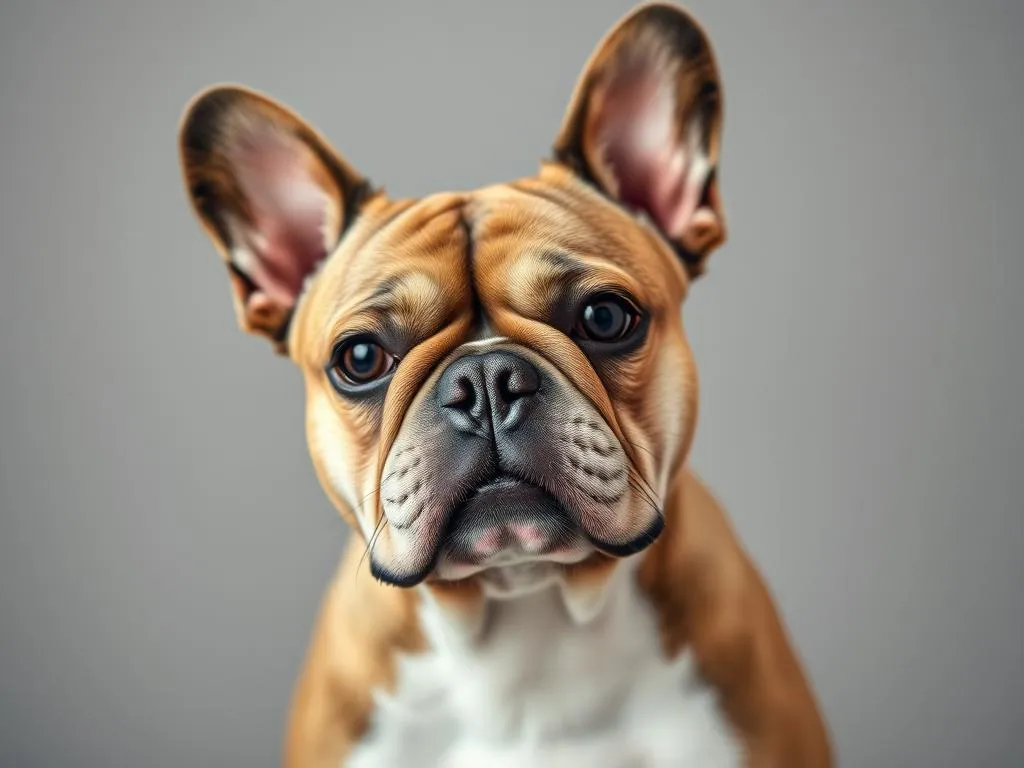
Introduction
The French Bulldog is a beloved breed known for its charming personality, compact size, and distinctive features. One of the fascinating aspects of this breed is its diverse range of coat colors, which contribute significantly to its appeal and popularity among dog enthusiasts. Understanding the common French Bulldog colors not only enhances our appreciation for this breed but also plays a crucial role in breed standards and breeding practices. This article aims to delve into the various coat colors of French Bulldogs, their significance, and what potential owners should consider when choosing a color.
Overview of the French Bulldog
History of the French Bulldog
The origins of the French Bulldog can be traced back to the early 19th century in Nottingham, England, where it was initially bred as a miniature version of the English Bulldog. With the rise of the lace-making industry, workers brought these small dogs with them to France, where they quickly gained popularity among the French populace. The breed was further refined through selective breeding, and by the late 1800s, the French Bulldog had established itself as a distinct breed, characterized by its bat-like ears, short muzzle, and compact frame.
Characteristics of the French Bulldog
French Bulldogs typically weigh between 16 to 28 pounds and stand about 11 to 12 inches tall at the shoulder. They boast a muscular build with a broad, square head, and their signature “bat ears” set them apart from other breeds. The temperament of the French Bulldog is one of its most appealing traits; these dogs are affectionate, playful, and known for their friendly demeanor. They thrive on human companionship, making them excellent family pets.
Understanding Dog Coat Colors
The Genetics of Dog Coat Colors
The color of a dog’s coat is determined by genetics, with multiple genes influencing various aspects of coat appearance. In French Bulldogs, the basic genetics of dog colors can be quite complex. Several genes interact to produce the wide variety of colors seen in this breed, including those that determine base colors, patterns, and markings.
Importance of Coat Color in Dog Breeding
Coat color plays a significant role in dog breeding, as it can influence breed standards and the preferences of potential owners. In the case of French Bulldogs, certain colors are more desirable than others, leading to trends that can affect breeding practices. Understanding these trends is essential for both breeders and prospective dog owners.
Common French Bulldog Colors
Fawn
Fawn is one of the most common colors found in French Bulldogs. This color ranges from light fawn to dark fawn, with variations often characterized by the presence of a black mask. Fawn French Bulldogs are highly sought after due to their warm, appealing appearance and versatility in terms of personality. The popularity of fawn French Bulldogs has only increased over the years, making them a frequent choice for new dog owners.
Brindle
Brindle French Bulldogs are recognized by their unique coat pattern, which features a mix of fawn and black stripes. This striking coloration gives them a distinctive appearance that sets them apart from other variations. The contrast between the fawn base and black stripes makes brindle one of the most visually appealing French Bulldog colors. While some may confuse brindle with fawn, the two are distinct, with brindle showcasing a more dynamic pattern.
Pied
The pied coloration in French Bulldogs is characterized by large patches of white combined with any other color, such as fawn or brindle. This pattern creates a striking appearance and is particularly popular among dog owners who appreciate unique and eye-catching designs. Pied French Bulldogs often display an array of combinations, making each dog a one-of-a-kind companion.
Black
Black French Bulldogs are less common than their fawn or brindle counterparts but have their own unique charm. Their solid black coat gives them a sleek and elegant appearance. Despite some myths surrounding black French Bulldogs, they are just as healthy and lovable as those with other colors. Educating potential owners about these misconceptions is essential for promoting awareness of the breed’s diversity.
Blue
Blue French Bulldogs are a rarer variation known for their striking grayish-blue coat. This color is not only eye-catching but also often comes with health concerns. Blue coats can be associated with certain genetic conditions due to the dilution of pigment. Prospective owners should be aware of these potential health issues when considering a blue French Bulldog.
Chocolate
The chocolate French Bulldog is another rare color variation, characterized by its rich, deep brown coat. Much like the blue coloration, chocolate French Bulldogs may come with their own set of health considerations. Breeding practices for chocolate French Bulldogs can be complex due to their rarity, making them a unique choice for dedicated dog lovers.
Other Colors
In addition to the common colors mentioned above, there are several rare variations of French Bulldog colors, including lilac and merle. Lilac French Bulldogs display a diluted version of chocolate, while merle coats exhibit a unique marbled pattern. These colors, while captivating, can also come with increased health risks and should be approached with caution by potential owners.
Health Considerations Related to Coat Color
Common Health Issues in French Bulldogs
French Bulldogs are prone to specific health concerns due to their brachycephalic (short-nosed) structure. Common health issues include breathing difficulties, hip dysplasia, and skin problems. Understanding these breed-specific health concerns is crucial for anyone considering bringing a French Bulldog into their home.
Impact of Coat Color on Health
Certain coat colors in French Bulldogs have been linked to genetic predispositions for specific health issues. For example, blue and chocolate French Bulldogs may be at a higher risk for skin problems and other health complications due to the dilution of color. Responsible breeding practices are essential to minimize these risks and ensure the health and well-being of the breed.
Choosing the Right Color for Your French Bulldog
Personal Preference vs. Breed Standards
When selecting a French Bulldog, potential owners face the decision of balancing personal preference with adherence to breed standards. While aesthetics play a role in choosing a color, it is vital to prioritize the dog’s health, temperament, and overall well-being. Understanding breed standards can help guide this decision-making process.
Considerations for New Owners
New owners should take several factors into account when choosing a French Bulldog color. Personal preference, lifestyle, and the dog’s health should all be considered. It is also important to seek out reputable breeders who prioritize the health and integrity of the breed over mere color trends. Responsible breeding practices can help ensure that the French Bulldog will be a healthy, happy companion.
Conclusion
In summary, the common French Bulldog colors encompass a wide spectrum, from the popular fawn and brindle to rarer variations like blue and chocolate. Each color has its own unique appeal and significance within the breed. However, it is essential for prospective owners to prioritize health, temperament, and responsible breeding practices over color preferences. By making informed decisions, future dog owners can enjoy the companionship of a French Bulldog that fits their lifestyle and needs.
Frequently Asked Questions (FAQ)
What are the rarest colors of French Bulldogs?
The rarest colors of French Bulldogs include lilac and merle, along with blue and chocolate variations. These colors often come with specific breeding challenges and health considerations.
Are certain colors more prone to health issues?
Yes, certain colors, particularly blue and chocolate, have been linked to specific health issues due to the dilution of pigment. It is essential to consult with a knowledgeable breeder who prioritizes health in their breeding practices.
How do I find a reputable breeder for a specific color?
To find a reputable breeder, research breed clubs, attend dog shows, and seek recommendations from veterinarians or fellow dog owners. Ensure the breeder adheres to responsible breeding practices and prioritizes the health of their dogs.









